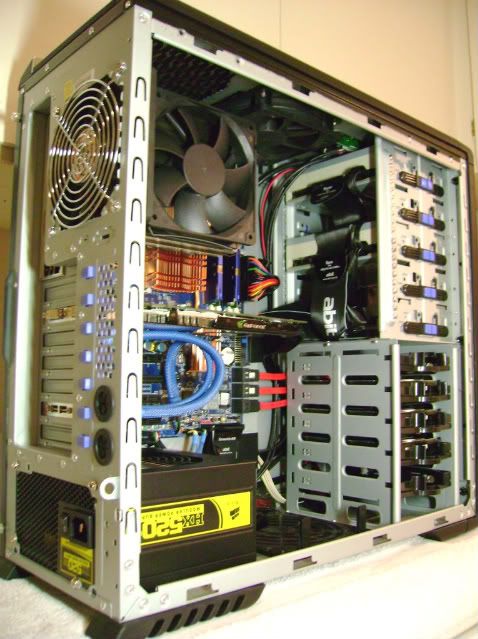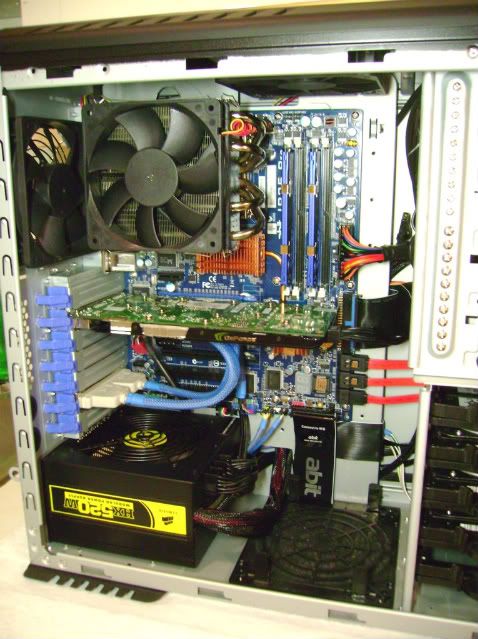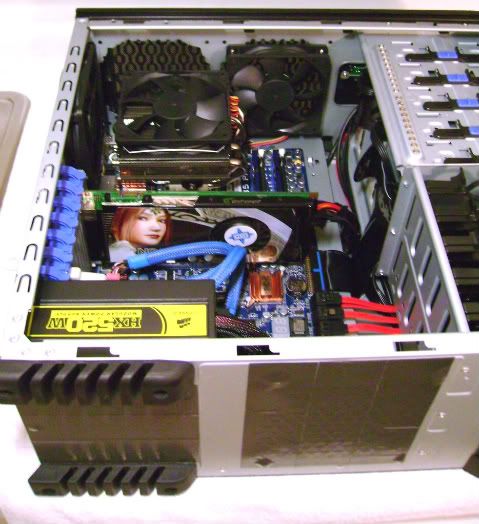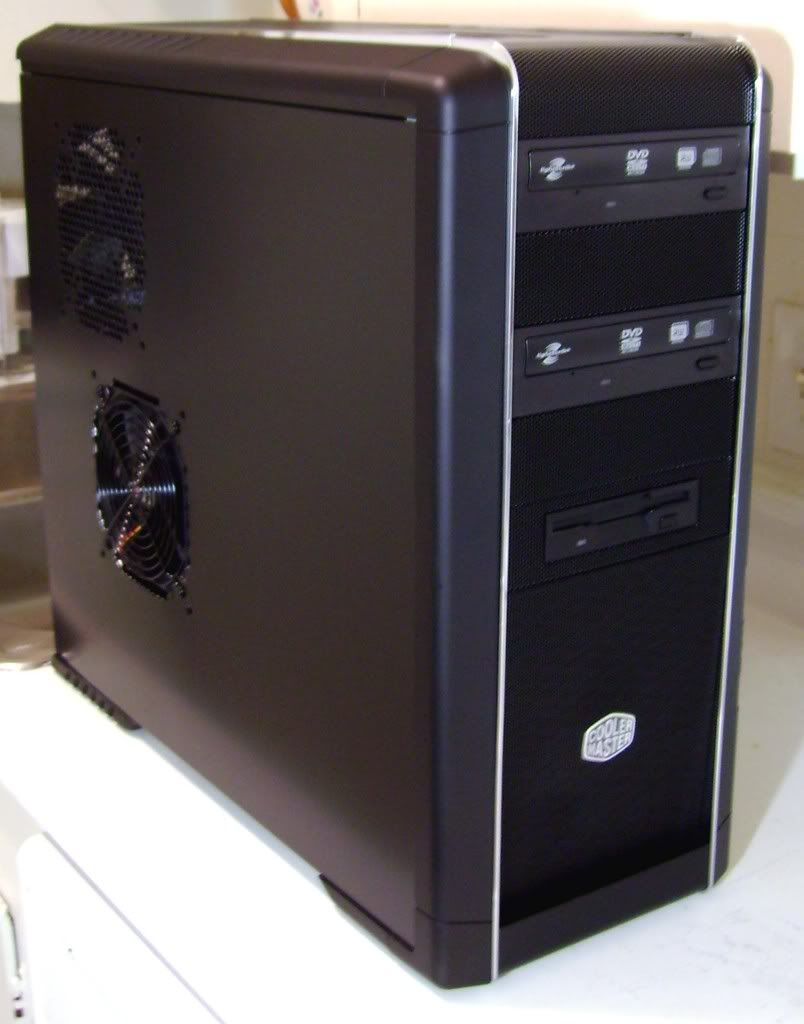Quote:
Originally Posted by vvs_75 /img/forum/go_quote.gif
So I think I am ready to switch from CD transport as a source to desktop computer. Since I will be buying everything I would like to get it right from first time. I basically decided already which soundcard I am getting, its ether RME 9632 or AES16. (These only cards that can output AES3 24/196 digital output which I need.)
I have no experience with computer for audio purposes but I know that stuff like RAM, HD, CPU or PSU important if you use it for graphics design or games.
So how important RAM or Hard Drive in sound quality in my case and what to get?
|
RAM has no effect. So, this advice has nothing to do with sound quality: get a reputable cheap brand, DDR-2 800 5-5-5-18 or better at 1.8V. A-Data, Crucial, Corsair, and Patriot off the top of my head.
HDD: a quiet HDD will allow you, all other things being equal, to nicely remain closer to your desktop than a louder one, and/or keep the volume just a hair lower. The best way to go is get a quiet one in a case with grommet mounting, or soft-mount in 5.25" bays (being DIY-savvy, handing soft-mounts and suspension will not be hard, if you want to try it).
Quote:
Should be Windows based and in smaller form factor at list bit smaller then regular desktops. I don’t need best of the best just good enough to power my soundcard and do the job.
Thanks! |
Smaller form factor, eh? Hrm...
Well, regardless, if you're up to building, don't get a big vendor box. Some used to be good (up to the early P4 era, Dell home PCs rocked, FI), and some are good when you pay a bit more (HP's current workstation boxes are nice).
In general, though, we haven't been soured to them just because they aren't DIY-friendly and uber-quiet. Across the board, quality is sub-par with big vendor boxes. Every time I see a new one open, there are missing power phases by the CPU, low quality capacitors, bad case design choices (like to save a few pennies), poor case materials, crap PSUs, or some other thing. There are many good reasons that companies with not-too-cheap products, like Corsair and Antec, can survive in competitive environments like PC components, when you can buy a whole PC off the shelf, and the quality of consumer lines of companies like Dell, HP, and Gateway is one of them.
My recommendation for hardware would be a nice Geforce board (or similar IGP), low-end Athlon64 X2 (X2 4200+ to X2 5200+), 4GB RAM (DDR-2 800, 5-5-5-18 or lower on any of the four at 1.8V, preferably a 2x2GB kit--RAM is too cheap to skimp on!), and two big quiet HDDs. MSI's K9N2GM-FD looks like a good one (I haven't used the board, so do your research! Just notice the no-heatpipe decent-sized heatsink, spacious-for-being-itty layout, etc.). Intel is nice and all (I'm running a C2D 2.66 on a Gigabyte GA-P35-DS3R 2.0), but if you don't need the performance, stop at decent dual-cores, and save a few bucks.
When compiling and such, a speedy Intel chip is sweet, but for most people, it's far over what they need. Intel G33 boards are good, too, but lack integrated DVI transmitters, and tend to be more expensive. When it comes to performance, AMD is a good value at the low end, but as the performance ramps up, they hit a 50 foot thick brick wall. Intel doesn't have options quite as cheap, including video, at comparable performance, but once you get around the X2 5600+, it gets close to a wash, then Intel picks up in performance and performance per dollar. Also, the P35/G33 is a rock-solid "just works" chipset, the likes of which has not been seen since the 440 series (which ended with the 810). So, while I know it doesn't help by giving you
more choices, Intel isn't
necessarily a waste, even costing more at the low end of performance, if you want to pay a hair more to eliminate possible chipset issues (usually even the commonly-complained about ones are rare, but they can be a PITA when you're the one hit by one, so...
).
Your exact choices depends on your needs and how much work you want to do. SPCR is your friend. You should quickly notices many familiar handles. There are several good HDD choices, depending on what you want (performance, 2.5", 3.5"). If you get one of the Antec cases with grommet mounted HDDs, it's hard to go wrong with WD GP drives (for 750GB and 1TB, at least)...but there are others, and both WD and Samsung have good 500GB drives--check them out.
Don't do RAID--please! Use Karen's Replicator, or maybe even buy a backup app, like Acronis True Image, and back up your data to the other drive regularly (Acronis can do a whole OS image, making restoration easier). RAID is good for availability, but only protects against a narrow range of hardware failures, and does not protect against the majority of software failures that can hose your data. Yes, I have lost data in a RAID with all good hardware, and also from malfunctioning hardware that did not outright fail.
The hassle of reloading the OS and copying data back is far less than re-ripping everything. This comes from hundreds of hours of personal experience after two such crashes (each radically different in cause).
For cooling well and quietly, check out more stuff at SPCR. The Scythe Slipstream fans (800 RPM stock versions) are the best quiet fans out there, and can be lowered to 400 RPM with ease (5 volts or so), and can go a bit lower, even. The new heatsinks from Scythe and Thermalright are tantalizing...as long as you get one that does
not use push-pins (only a concern if you go Intel), you'll be fine. AS Ceramique is decent performing goop for the job, and very easy to apply (you can be sloppy with it and it's no big deal). AS5 is OK, but Ceramique is still the easiest to use.
Other general advice, since you seem a n00b at this:
- Take your time with the heatsink (especially TIM, unless you use the retail HSF), fan(s), and cables. It's OK if it takes you a couple hours the first time around. Just be careful and patient, and it'll all work out.
- Make sure to test the PC with a monitor and keyboard at the following stages:
1. PSU+mobo+CPU+heatsink+RAM in the case, all power connectors to the mobo and fans plugged in. Get int he BIOS, browse around, make sure the date is right, and if not, set it and save. Else exit w/o saving.
2. Everything else plugged in. At this pint, get in the BIOS' health screen, and keep track of temps and voltages for awhile (maybe as long as 30 minutes). Nothing to fret about, but if your CPU gets 15C above ambient just sitting there, FI, you probably need to redo the thermal paste (FYI, it will get hotter there than when idling at your Windows Desktop). 99% of the time, it will just be a boring wait. The 1% it isn't makes it worth doing.
3. Get a live Linux CD with memtest (almost all of them), and run it. With a brand new PC, if it makes a single full pass, I'd trust it. Another one of those things that's worth doing for the rare occasions you got bad RAM (rather, most RAM is not packaged in sealed anti-stat bags--I doubt it is bad when it leaves the factory).
- Once you have Windows installed, get the chipset drivers installed, get yourself to the newest service pack, and do all your Windows Updates
before installing additional software. Then finish up on drivers and other software later. Due to MS getting mean with Autopatcher, this may or may not take forever.
- Use the web interface, go custom, and check out your optional updates, once the criticals are done. If it doesn't look like something to avoid (like the newest Windows media Player, depending on your feelings about it
), get it.
- Check out Anandtech and/or Majorgeeks forums for good free AV and personal firewall stuff, among other things, if you haven't gotten that figured out, yet (I prefer AVG for AV).
- Spend much time browsing the SPCR gallery. I've been at it for a few years, and still can't make something like the typical neat and tidy box there, but it should give you ideas for laying out the cooling, cabling, etc..
I hope that helps and doesn't confuse you too much.









